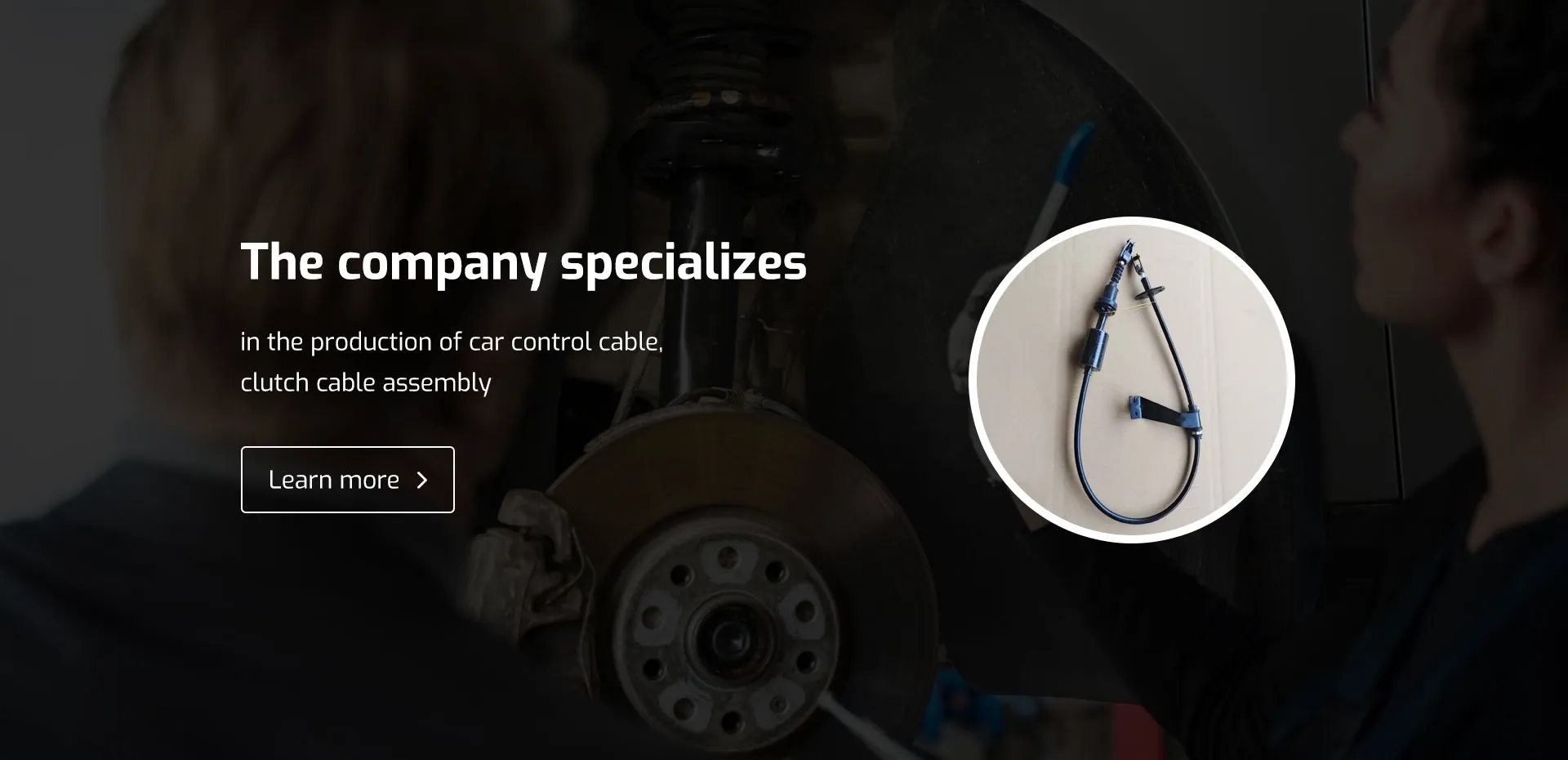gear stick cable
Understanding Gear Stick Cables A Critical Component in Vehicle Transmission Systems
In the realm of automotive engineering, the precision of vehicle controls is paramount for optimal performance and driver safety. Among the various components ensuring a vehicle operates as intended, the gear stick cable plays a crucial role in facilitating smooth transitions between gears in a manual transmission system. This article delves into the significance, functioning, and maintenance of gear stick cables, shedding light on why they deserve more attention from vehicle owners and enthusiasts alike.
What is a Gear Stick Cable?
A gear stick cable, also known as a gear selector cable, is a flexible conduit that connects the gear stick or shifter to the transmission of a vehicle. This cable transmits the driver’s input when changing gears, translating the physical movement of the gear stick into corresponding adjustments within the transmission. Primarily, this component is found in vehicles equipped with either manual or automatic transmissions that requires a mechanical link between the shifter and the transmission system.
How Does It Work?
The gear stick cable operates on a simple but effective principle
. When the driver moves the gear stick, the attached cable pulls or pushes, depending on the desired gear selection. This movement is relayed to the transmission, which engages the appropriate gear. The efficiency of this process is vital for maintaining the vehicle’s performance, as even the slightest misalignment or wear in the cable can lead to significant shifting issues.In most modern vehicles, gear stick cables are designed to accommodate a range of movements while maintaining resistance against friction and wear. They are typically constructed from durable materials and often feature protective outer casings to shield them from extreme temperatures, road debris, and other environmental factors that could compromise their integrity.
Signs of Gear Stick Cable Issues
Regular maintenance and inspection of the gear stick cable are crucial. Over time, cables may stretch, fray, or become misaligned, leading to several symptoms that indicate potential issues. Here are some common signs of a failing gear stick cable
gear stick cable

1. Difficulty Changing Gears If the driver experiences resistance or a delay in shifting, it could be an indication that the cable is worn or improperly adjusted. 2. Gear Slippage Unintended gear changes, especially in automatic vehicles, can signify that the cable is not effectively communicating the driver’s input to the transmission.
3. Unusual Noises Grinding or clunking sounds when changing gears can point toward cable problems or issues within the transmission itself.
4. Visual Damage Inspecting the cable for any visible signs of wear, including frays or cracks, is another essential step for early identification of issues.
Maintenance Tips
To ensure the longevity of the gear stick cable, vehicle owners should adhere to the following maintenance tips
- Regular Inspection Conduct routine checks of the gear stick and cable connection, especially during routine vehicle servicing. - Prompt Repairs Address any shifting issues immediately, as delaying repairs can exacerbate the problem and lead to more extensive damage. - Keep it Clean Regularly clean around the gear stick and cable area to prevent grime accumulation that may cause friction and limit cable performance.
Conclusion
The gear stick cable is an often-overlooked component of a vehicle’s transmission system. Its role in ensuring smooth gear transitions is essential for both the performance and safety of the vehicle. Understanding how it works, recognizing potential problems, and committing to regular maintenance can prolong the lifespan of this critical component, ultimately leading to a better driving experience. As technology continues to evolve in the automotive industry, appreciating simpler mechanics like the gear stick cable remains essential for all vehicle owners—offering insights into the intricate dance of mechanical systems that power our daily drives.
-
Upgrade Your Vehicle with High-Quality Handbrake CablesNewsNov.01,2024
-
Optimize Your Bike's Performance with Quality CablesNewsNov.01,2024
-
Enhance Your Vehicle's Performance with Quality Clutch ComponentsNewsNov.01,2024
-
Elevate Your Vehicle's Performance with Quality Throttle CablesNewsNov.01,2024
-
Elevate Your Vehicle's Performance with Quality CablesNewsNov.01,2024
-
Affordable Solutions for Your Cable NeedsNewsNov.01,2024
